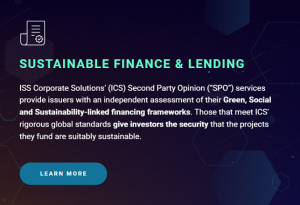
DATE PUBLISHED: July 14, 2023
July 2023 | Sustainable Finance Market Highlights
Market and Regulatory Highlights
May 2023 saw $62.3bn of green bond issuances, a rise from $60.3bn in the same month a year earlier, making it the busiest May since the inception of the green debt market in 2007. The growth was driven by the continuing rise of sovereign issuances. A total of $80bn has been raised by sovereign green bonds so far in 2023, exceeding the roughly $37bn raised in the last two years and surpassing the total for all of 2022. Green bonds are expected to remain the dominant label in 2023 and are forecasted to represent more than 60% of total ESG volumes. (Bloomberg and Environmental Finance)
New issuance volumes in the global Sustainable Bond market are expected to increase by around 36% and exceed $1trn in 2023 (compared to $740bn in 2022 and $957bn in 2021), according to DZ Bank. The green bond segment will remain a growth driver this year, with forecasted new issuance volume up to $620bn, a 40% gain over 2022 year.
In May, The European Leveraged Finance Association and the International Capital Market Association jointly created a set of recommendations for the high-yield bond market in line with ICMA’s Sustainability-Linked Bond Principles. The practical guide lays out 10 recommendations addressing specific characteristics of high-yield bonds such as redemption provisions, covenant provisions, generally shorter tenor and higher representation of non-listed companies, which has implications for disclosure and reporting (High yield SLB – practical recommendations). Our SPO methodology has been updated to reflect the implications for high-yield issuers.
Also in May, the final text of the EU Green Bond Standard regulation was leaked shortly ahead of its official adoption. Entry into application will occur around mid-2024. The GBS is expected to set the gold standard for what constitutes a green bond in the EU (final draft EU GBS).
In June, the European Commission put forward a new package of measures to augment and strengthen the foundations of the EU sustainable finance framework. The Commission incorporated additional activities into the EU Taxonomy and proposed new rules for ESG rating providers to increase transparency for sustainable investments. The package also aims at ensuring that the sustainable finance framework works for companies that want to invest in their transition to sustainability. (EU sustainable finance package – factsheet)
Also in June, the Science Based Targets initiative presented three draft financial sector resources for public consultation. They focus on establishing credible short -and long- term net-zero targets across financial institutions’ portfolios and operations, more ambitious emissions reduction target guidance that will require financial institutions to further align with a 1.5°C pathway, and address how financial institutions should work with fossil fuel companies. (SBTi website)
The International Capital Markets Association (ICMA) in June published an updated version of its transition finance handbook and expanded the sustainability-linked bond guidance at its annual general meeting. The new guidelines include references to the “just transition” concept and additional indications in terms of target population for social bonds. Complementary guidance has been published in the form of a Q&As related to applying the core elements of the SLBP. The illustrative key performance indicator (KPI) registry has also been further expanded.


